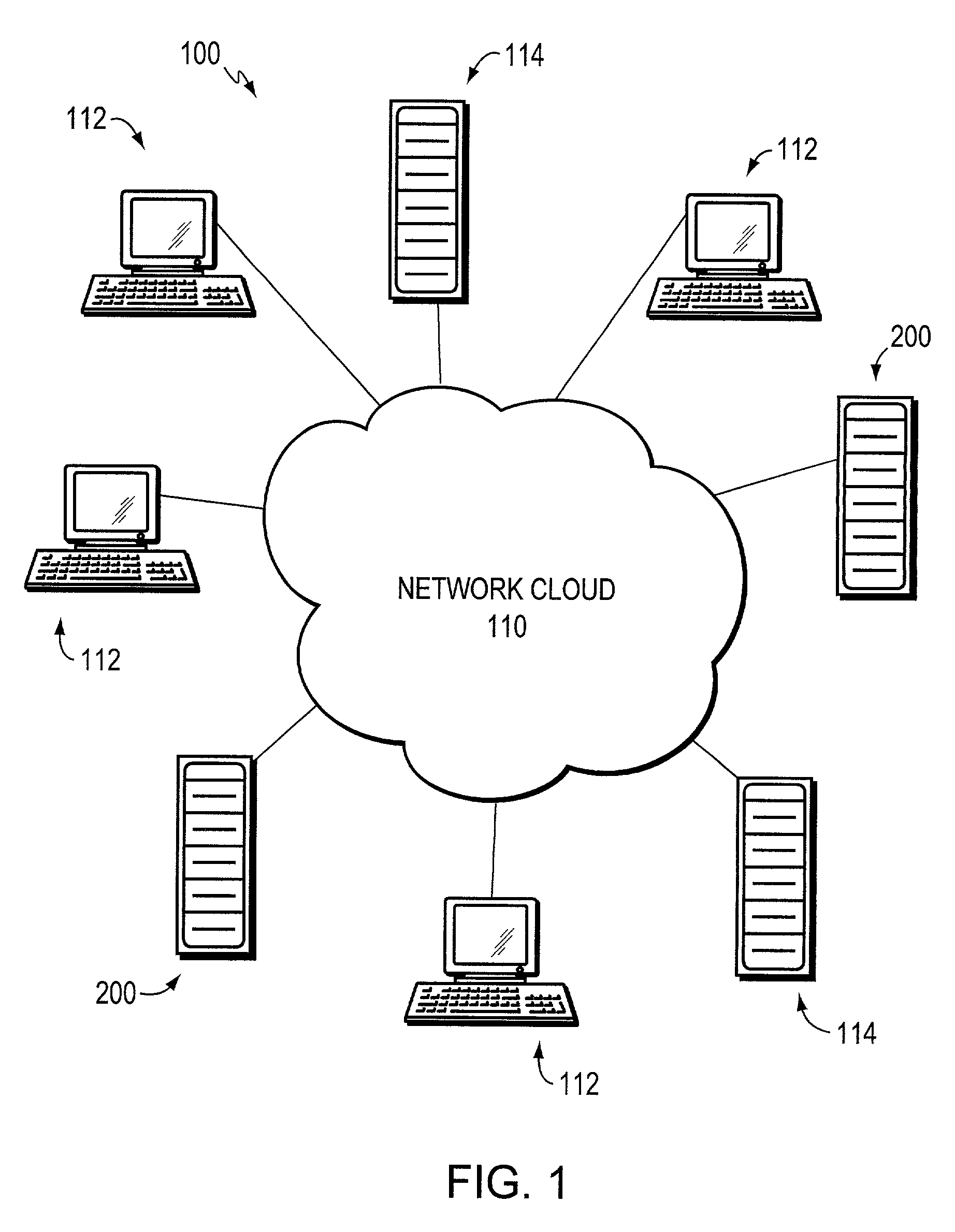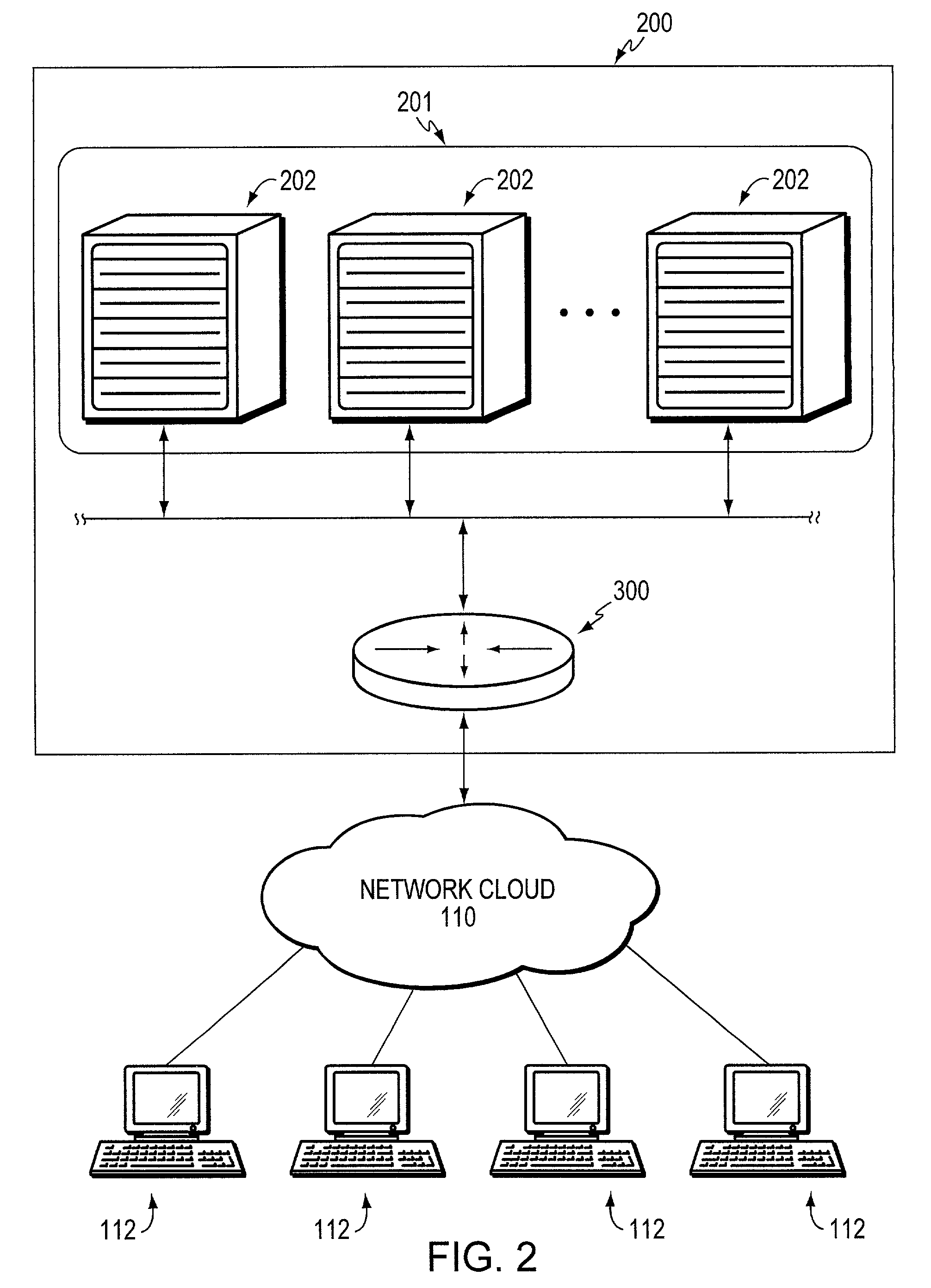Highly scalable least connections load balancing
a load balancing and low-cost technology, applied in the field of load balancing traffic, can solve the problems of consuming a fair amount of processing time of the device that is performing load balancing, unable to ensure that the various real servers are indeed effective load balancing, and server can become a bottleneck in the network
- Summary
- Abstract
- Description
- Claims
- Application Information
AI Technical Summary
Benefits of technology
Problems solved by technology
Method used
Image
Examples
Embodiment Construction
[0019]FIG. 1 shows an illustrative network 100 including a network cloud 110 which may be a combination of transmission lines, backbones, switches, routers and repeaters, dependent on the extent of the network, and allows various devices connected to the network to communicate with each other. These various devices may include simple computers such as personal computers (PCs) and workstations 112, (herein referred to as clients) that transmit or receive data, or they may be sophisticated servers 114 that store various resources. The network 100 may also include virtual servers 200, which operate in accordance with an embodiment of the present invention, to exchange data with clients 112. The network cloud 110, for instance, may be the Internet that interconnects large numbers of these simple computers, servers and virtual servers to facilitate the exchange of information. Information, in one example, flows in packets having attached headers that include, among others, source and des...
PUM
 Login to View More
Login to View More Abstract
Description
Claims
Application Information
 Login to View More
Login to View More - R&D
- Intellectual Property
- Life Sciences
- Materials
- Tech Scout
- Unparalleled Data Quality
- Higher Quality Content
- 60% Fewer Hallucinations
Browse by: Latest US Patents, China's latest patents, Technical Efficacy Thesaurus, Application Domain, Technology Topic, Popular Technical Reports.
© 2025 PatSnap. All rights reserved.Legal|Privacy policy|Modern Slavery Act Transparency Statement|Sitemap|About US| Contact US: help@patsnap.com



